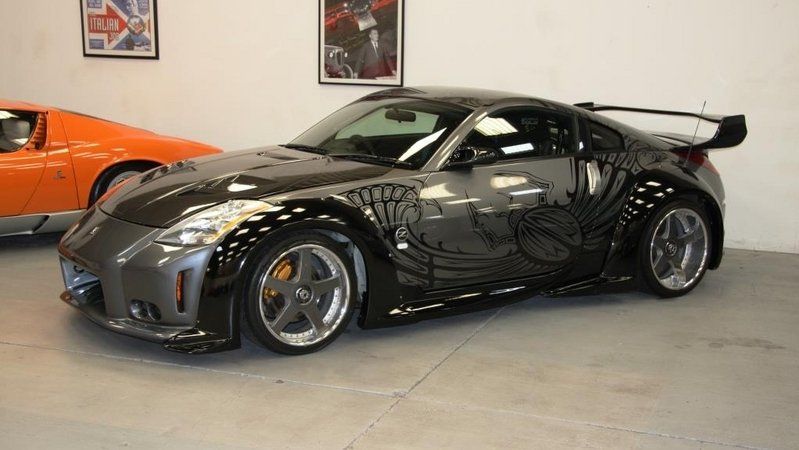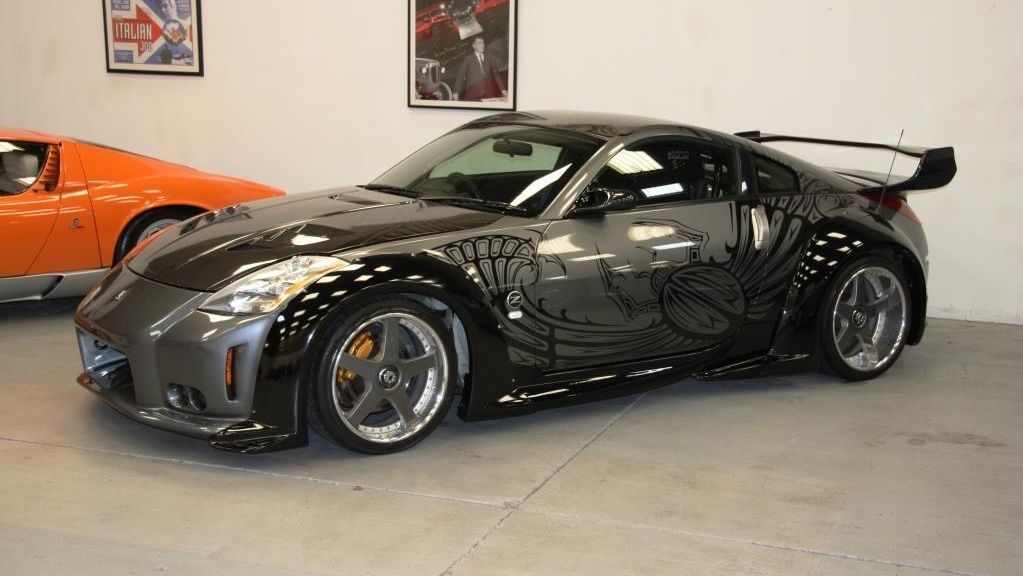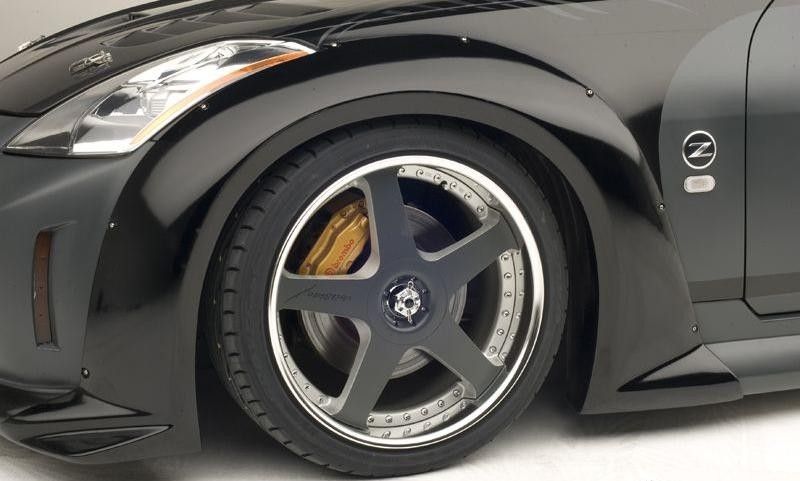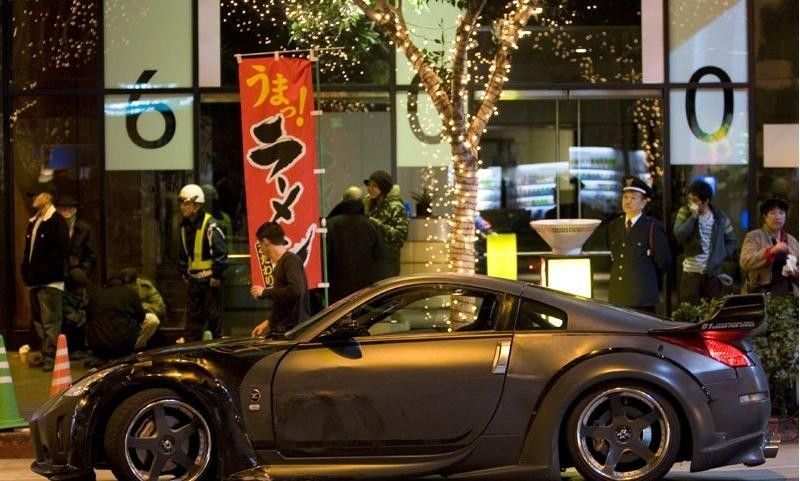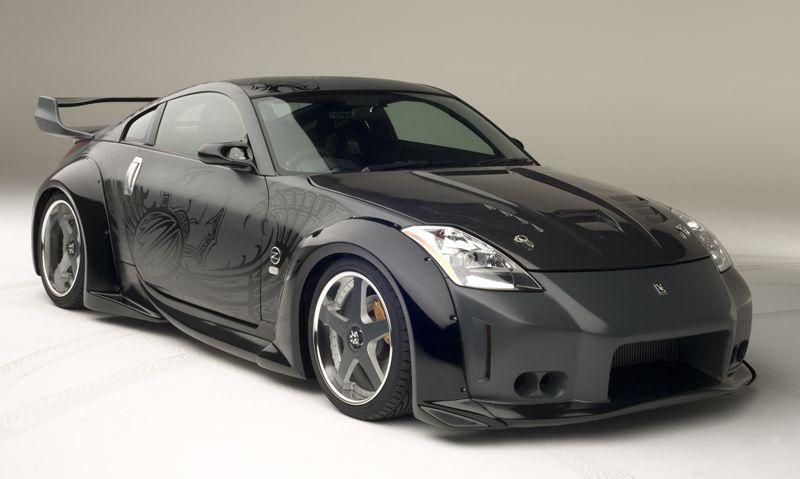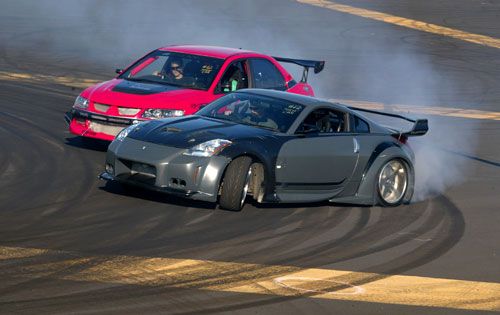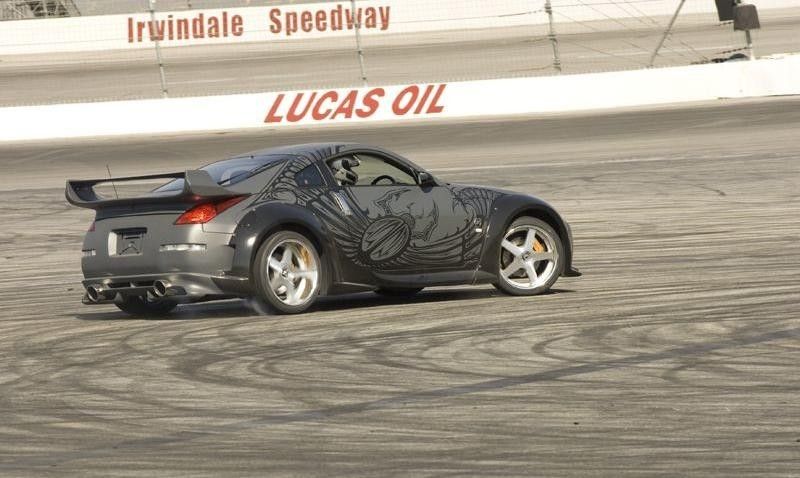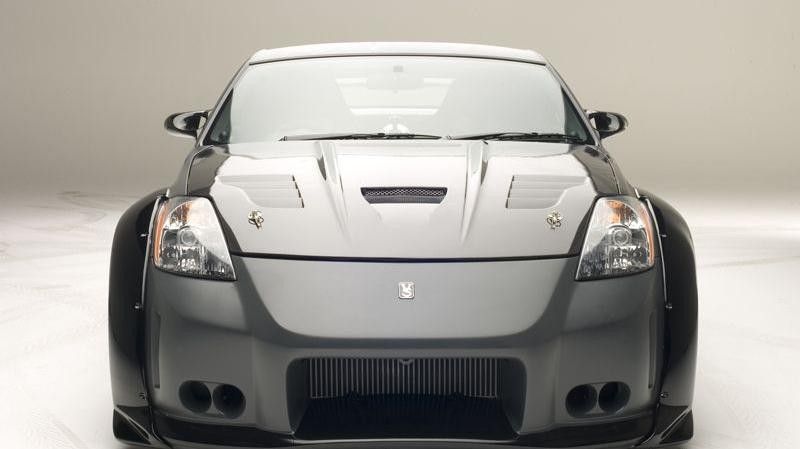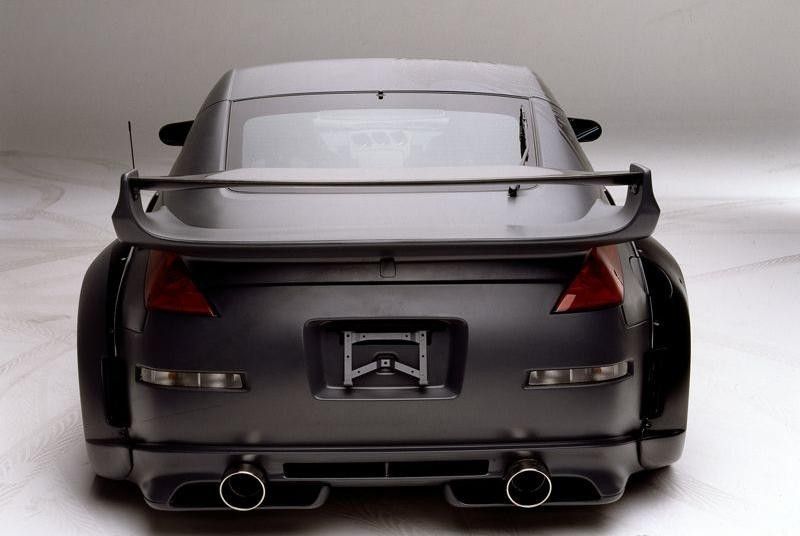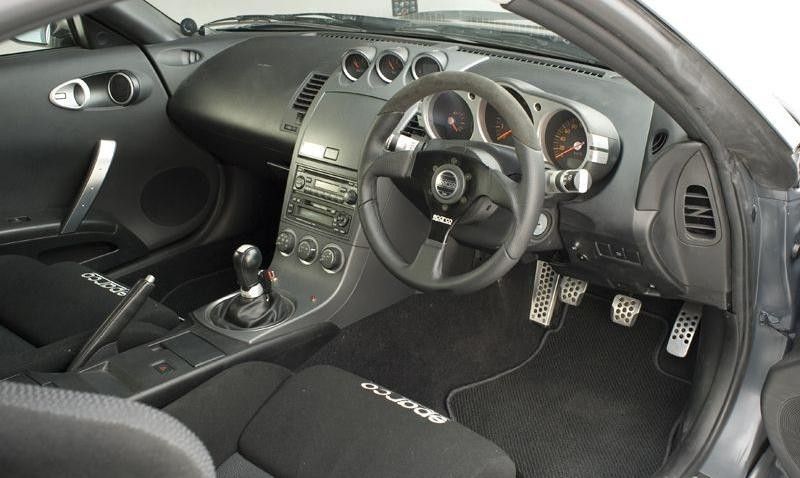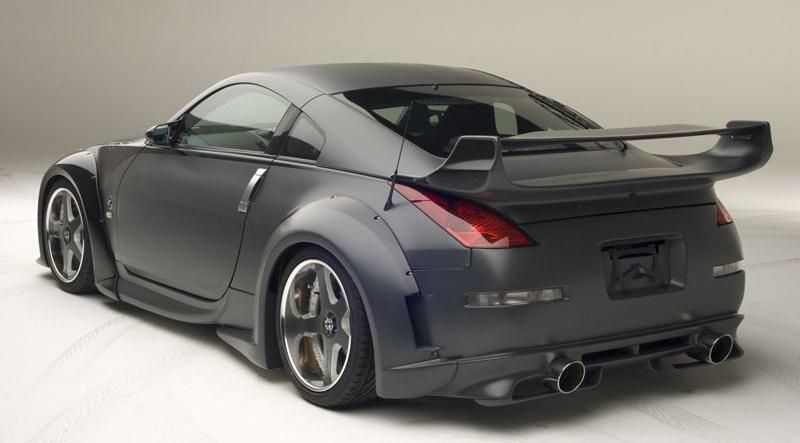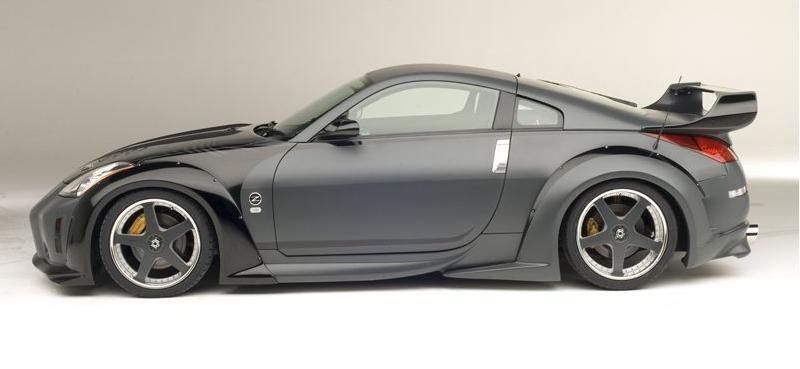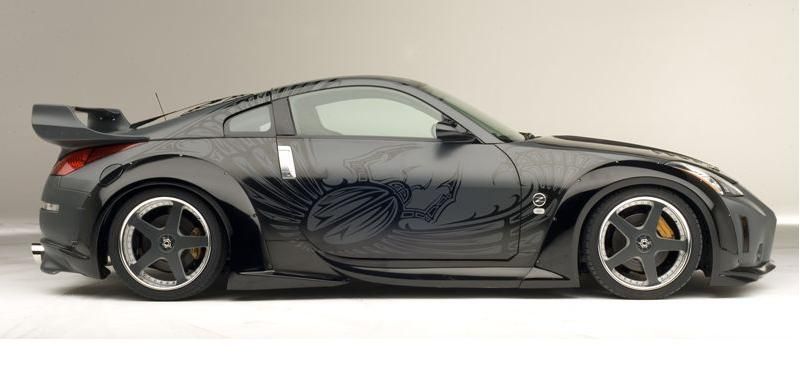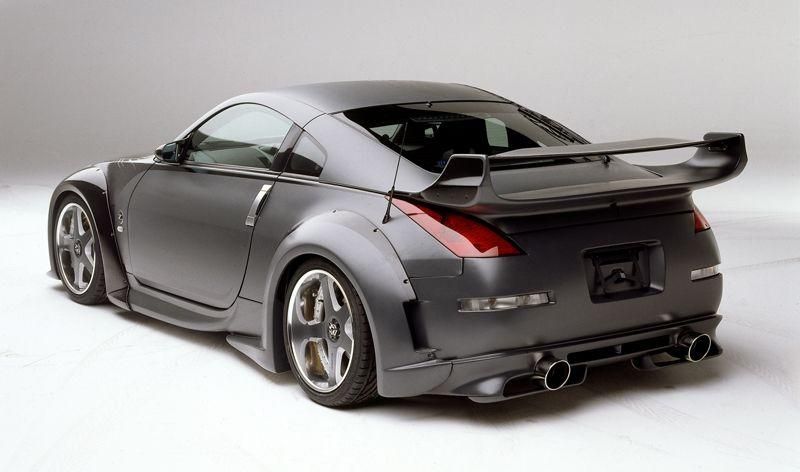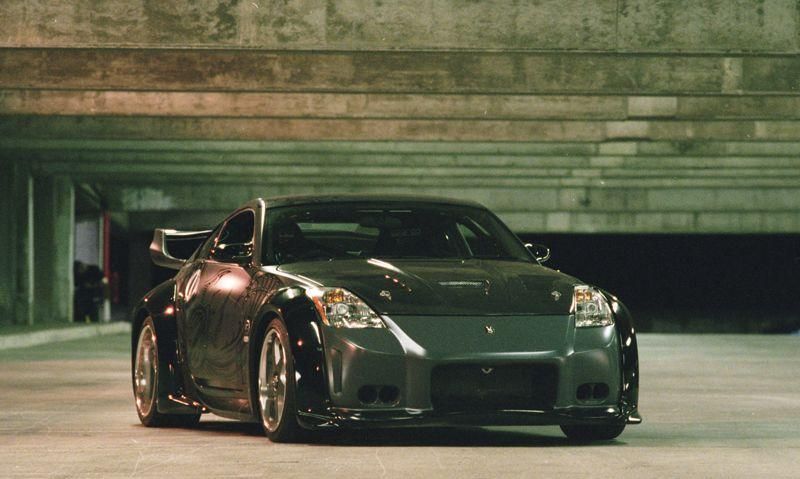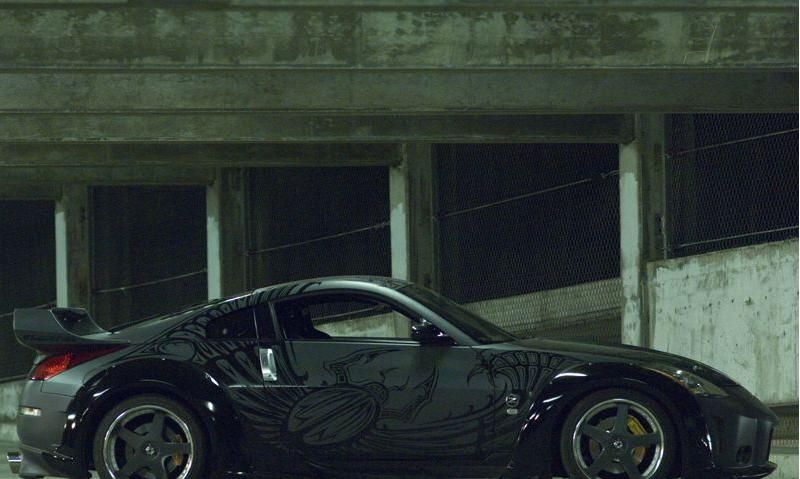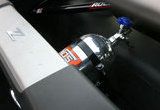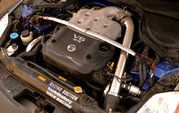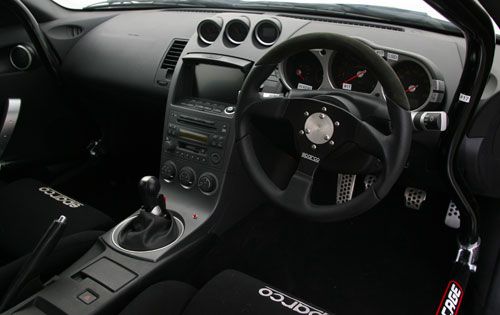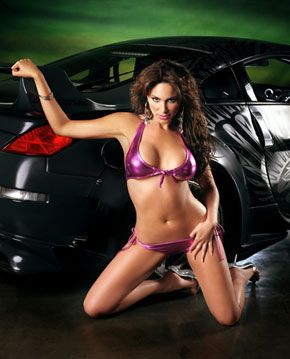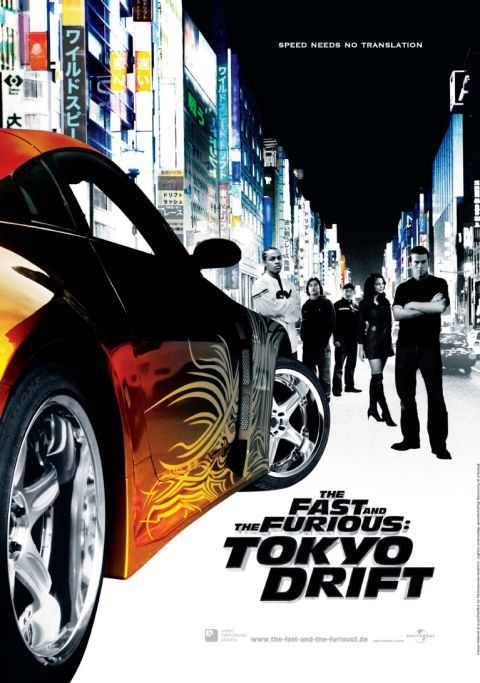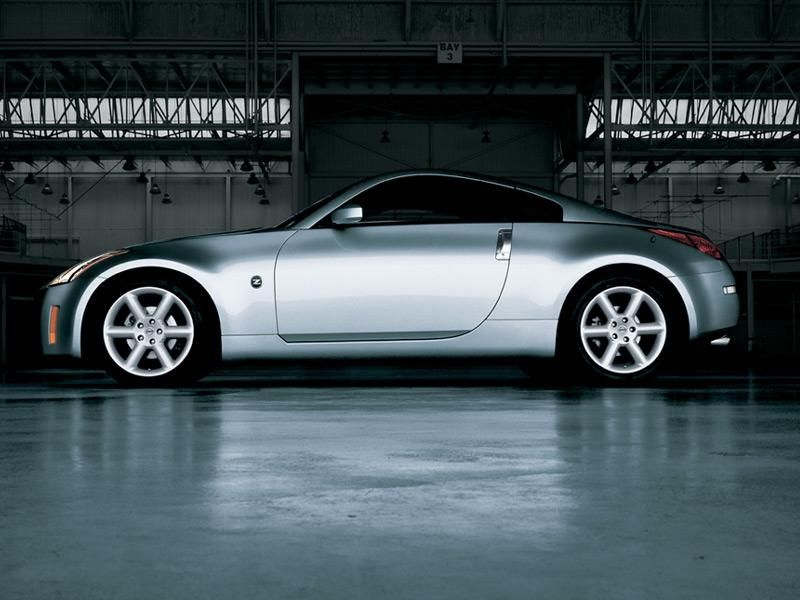To be considered even halfway decent, every car movie has to have its vehicular villain. Bullitt had the Dodge Charger,->ke218 Death Proof had the Chevy->ke199 Nova, and Fast & Furious: Tokyo Drift… well, it had this fifth-generation Nissan Z.->ke2077 Complete with an extensive wide-body aero kit and menacing black-and-grey paint job, this thing comes packing real performance under the hood, which means all that wastegate flutter you hear ain’t just for show. This is the Drift King’s 350Z.->ke520
Universal pumped out 11 copies of the car for stunt duties, each bearing the same body kit and large, 19-inch wheels. Most were bought used in Japan and sent to California for modification and filming. However, only two were equipped with turbos, and luckily, both survived film production without getting blown up or stuffed into a wall.
And it’s a good thing too, because now they can be enjoyed outside the confines of the silver screen.
Updated 08/06/2015: This car just went up for sale through Cheshire Classic Cars here, making for one helluva Fast & Furious collectible. However, the future owner will have to be committed, as it’s priced at £149,995 – roughly $233,000 at current exchange rates. Yikes.
Continue reading to learn why this isn’t just another Tinseltown special.
2003 Nissan 350Z Tokyo Drift
- Make: Array
- Model: 2003 Nissan 350Z Tokyo Drift
Exterior
How does one go about making a Hollywood baddie-mobile? First things first – it’s gotta look the part.
In stock form, the 350Z is styled like a Z car should be, with a long hood, a cabin that’s pushed rearward, a roofline that angles gently towards the tail and a short overhang for the drive axle. It very much plays the part of a two-door RWD sports car,->ke506 with muscular lines and a simple, understated design. It also makes an ideal blank canvas for the aftermarket.
Enter Hironao Yokomaku. Mr. Yokomaku is the president of Veilside, one of the top tuning companies in Japan, known for its high-end suspension, engine, interior and exterior parts. In addition to running Veilside, Mr. Yokomaku also enjoys exterior design work, and reportedly had a hand in crafting the wide-body aero kit you see adorning this Nissan.->ke62
It’s called the Ver. III Model, and it incorporates 10 individual pieces that utterly transform the Z33 Nissan Z. These parts include new front and rear bumpers, new side skirts and beefed up fender flares. There’s also a new louvered hood and a huge blade-style rear wing, both of which are available in either high-grade plastic or tasty carbon fiber (the Nissan, of course, uses the carbon-fiber one). The result is exotic and aggressive, like some kind of inter-dimensional GT car.
The Veilside theme continues in the corners, with the tuner providing its Andrew Evolution V wheels, staggered at 19x11 inches in the rear and 19x9 inches in front. These rollers have a five-spoke design in gunmetal grey with a deep-dish polished lip. In fact, the lip is so deep, you could practically take a bath in it.
Fitted to the doors are slick side-view mirrors from Ganador.
On top of it all is a two-tone paint job, with a lacquered dark grey covering the main fuselage and a glossy black that runs from the corners of the front bumper, up the fender flares, along the side skirts and into the corner of the rear bumper. The black paint is also used for the roof and rear wing mounts. Meanwhile, the hood and wing blade remain raw carbon fiber.
Finally, no Fast and Furious car would be complete without the requisite vinyl. As such, the car’s profile is adorned with a battle-beetle design finished in black – fitting when considering the 350Z’s hatch-like rear end.
All told, this car is as over-the-top as any other vehicle from the franchise, with the grey-scale paint job offering a much more threatening countenance than the bright, lime-green Mitsubishi Eclipse->ke251 or tangerine-orange 1995 Toyota Supra from the first installment.
Interior
Compared to the exterior, the inside of this 350Z is much tamer. However, that isn’t to say it’s boring.
Starting things off is optional equipment installed from the factory, such as a Bose sound system with a multi-disc CD changer (yeah, I remember 2002 also), and a central-dash-mounted display screen and navigation system. Above the screen sit three pods for stuff like an oil pressure gauge and a voltmeter. The climate control is retained, including the A/C – critical for keeping cool while traveling sideways at 80 mph.
While the seats on the factory 350Z are good, FIA-approved racing buckets are better. Replacing the stockers are Sparco Evo Ls, which offer a fixed back and a lightweight composite shell. Sparco was also enlisted for its four-point racing harness and grippy, three-spoke suede steering wheel. In case the car meets the broadside of something solid, a Cusco Safety 21, 11-point roll cage was installed.
All in all, it’s a pretty solid little package, keeping the stock car’s comforts while adding all the necessary elements for high-performance driving. Just remember to always wear a helmet when driving around in a caged interior, kids.
Drivetrain
Traditionally, the Z car has offered a simple and honest drivetrain – torquey six-cylinder engine mounted in the nose and power sent to the rear. The 2003 350Z is no different, offering the ubiquitous 3.5-liter VQ35DE V-6 for motivation. Equipped with CVTCS (Continuously Variable Valve Timing Control System), this unit is good for 287 horsepower and 274 pound-feet of torque.
Not bad for a naturally aspirated powerplant. This car, however, adds a double heaping of turbocharged boost, elevating output to 430 horsepower and 420 pound-feet-of torque.
That sizable increase comes courtesy of APS (Air Power Systems), which offered its twin-turbo conversion kit to help those rear tires spin a bit more freely. First, cold air from vents in the front bumper feed twin high-flow filters connected to each turbo via TIG-welded stainless steel piping and high-pressure silicone hoses. The turbines come from Garrett and draw exhaust gases through custom cast-iron manifolds. After compression, the intake charge is pumped through APS’s colossal DR-series bar-and-plate front-mount intercooler tucked behind that curvaceous Veilside bumper, finally hitting the intake manifold though a single polished pipe. After spinning the turbos, exhaust gases are directed down a 2.5-inch Magnaflow exhaust that terminates in dual 4-inch polished tips.
Sitting in the trunk is a neatly polished bottle of nitrous, although it’s currently just for show. A custom carbon-fiber engine cover adds under-hood flair.
An upgraded fuel pump and regulator handle the dino-juice duties in conjunction with larger injectors. APS also provided its custom ECU mapping. A larger alloy oil pan was installed, providing oil return ports for each turbo. There’s even a race-spec twin-vent blow-off valve for a faster response between shifts.
Routing the power is a six-speed manual transmission hooked up to a few parts from Nismo, including a two-plate clutch (rated up to 600 horsepower) and a two-way, limited-slip differential, both vital components for drifting. Smoke is issued via Toyo Proxes T1R tires, measuring in at 285/30ZR19 in the rear and 245/35ZR19 in the front.
Surprisingly, the suspension is almost bone stock, with the exception of firmer RS*R lowering springs to kill the fender gap. The brakes are untouched, with the factory Brembo units left intact.
Edmunds got the chance to test the car, and says it managed a 0-to-60 time of 5.7 seconds and a run through the quarter mile in 13.2 seconds at 114.8 mph, adding that with better launch control, it would definitely break into the 12s for the 1,320. As is, it’s several tenths quicker to 60 and about 1.5 seconds quicker in the quarter mile than a stock Z.
Finally, a line lock system helps to warm the rears. Driver aides currently sit in the “off” position.
Prices
Interested in grabbing this JDM dream-machine for yourself? Well, you’re in luck, because it’s currently up for sale from U.K.-based collector Cheshire Classic Cars. Check it out here.
Unfortunately, it’s a wee-bit expensive – $232,725, to be exact. That’s more than the Toyota Supra->ke355 that Paul Walker drove in the first Fast & Furious, which recently auctioned off for a much more reasonable $185,000. On the other hand, that car was more of a set piece, while this thing is the real deal under the hood.
While the Z’s role in the third Fast & Furious movie surely contributes to its lofty asking price, the long list of extras is part of the equation as well. For starters, that full Veilside Ver. III exterior doesn’t come cheap. The parts alone cost over five grand, while the wheels add another five (that’s before tires, by the way).
Throw on $6,000 of stickers and paint, and you’re looking at an exterior makeover worth as much as a brand new Honda Civic.->ke236 Then there’s the $7,500 turbo kit, the cage, the seats, etc., and well, you get the picture.
Still, anyone looking to drop almost a quarter million bucks on a Nissan will get all the official documentation that this car, chassis number Z33-001863, is in fact the Drift King’s Z. Incredibly, the car is also registered for road use in the U.K.
Competition
Paul Walker’s Orange 1995 Toyota Supra Mk. IV
What’s an undercover-cop-turned-street-racer to do when challenged to build a 10-second car? Hit the junkyard, round up the gang and cue the montage. Don’t forget the aluminum wing.
While a built, turbocharged and nitrous-fed 2JZ-GTE six-cylinder was the powerplant of choice in the movie, this real-life stunt car actually had a naturally aspirated, 220-horsepower, 3.0-liter 2JZ-GE engine. Not that it really matters, because it still has most of the bits and bobbles you’d need to convince everyone you’re the reincarnation of Brian O’Conner.
Read our full review here.
Vin Diesel’s 1970 Dodge Charger RT
The Beast. Black on black, with a 426 Hemi V-8 with a giant friggin’ blower sticking through the hood. As one of the only domestics featured in the first movie, this car is unique, proving once and for all that there truly is no replacement for displacement. One of the cars used in the movie hit the auction block a few years back, trading for a mere $130,000, so it’s good value for the money as well. Just be careful around any train tracks.
Read more about it here.
Conclusion
This car will undoubtedly elicit two reactions, both of them strong – love or hate. The lovers out there will ogle the car’s pricey exterior modifications and powerful, modified turbo V-6, while the haters will call it ugly and slow, a toy car for those without any taste.
No matter which camp you fall into, one thing is certain – in the right hands, this thing can put on a show. While some question Fast & Furious 3’s dearth of original characters and somewhat contrived plot, the action sequences showing this car in full sideways glory will surely elevate your heart rate.
And honestly, why else would you watch the movie in the first place?

